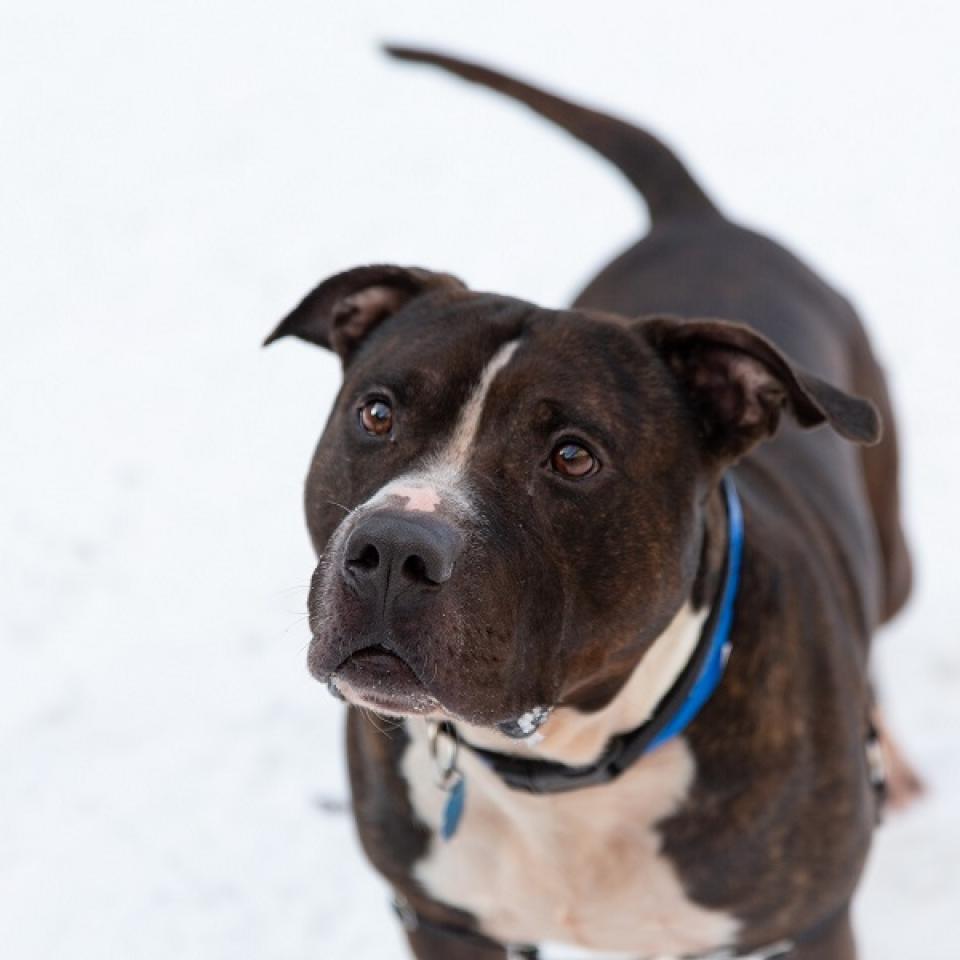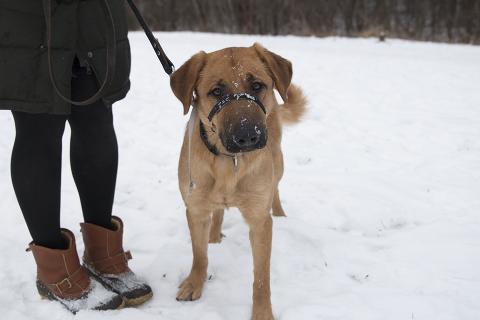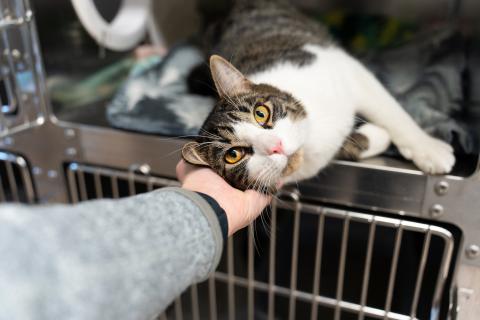
Winter is coming! The Old Farmer’s Almanac is forecasting snowfall to be above normal and colder-than-normal temperatures come December.
Animal Humane Society Veterinarian Dr. Kate Farmer tells us what to look out for in our furry friends when it comes to deciding how cold is too cold for your pet.
Warning signs that your pet is too cold
Once temperatures dip into the single digits and below, keep cats indoors at all times and limit your dog’s time outside to potty breaks. It’s also important to remember that elderly, young, small, and thin-coated dogs are more susceptible to the cold.
Signs it’s time to bring your pet inside include if they are reluctant to walk or are whining or barking. They might also start lifting their paws, shivering, or have hunched paws with a tucked tail.
It’s time to take them to the vet if you start to notice any redness, swelling, or darkening of the skin, especially on those vulnerable extremities like the ears, tail tip, paw pads or nose. These areas can be especially susceptible to frostbite.

How to keep your pet warm
There are ways to protect your pet when you do take him or her out for a potty break. Consider booties or paw wax to help protect their feet from the cold, snow, and ice. You can also shovel a path in your yard and cover it with straw to keep their paws dry.
Coats can also help keep short-haired dogs dry during walks, and don’t forget to wipe off any snow or ice that might have built up in their paws or fur.
What to do if you see an animal out in the cold
First, look for the warning signs that the animal might be too cold. Check to see if the animal has adequate shelter along with access to food and water.
Minnesota does not have tethering laws so an animal may be tied out. However, animals that are tied out must be free from entanglement or injury from the collar or tie out cord/chain.
Feral cats are accustomed to living outside and tend to be quite resilient. You can help them stay warm during cold snaps by building an outdoor cat shelter.
Lastly, animals should never be left in unoccupied vehicles when adverse weather conditions could affect their health or welfare. For example, a dog can’t be left unattended in a vehicle where there is danger of hypothermia or freezing.
If you find an animal in conditions that appear questionable, please contact your animal control division or AHS humane agents for assistance.
Sign up for AHS email
If you found this article helpful and want more information about pet parenting, sign up for email from AHS. You'll receive behavior tips, stories about adorable, adoptable animals, and more!



